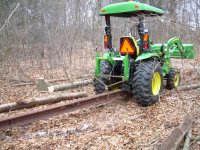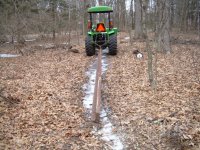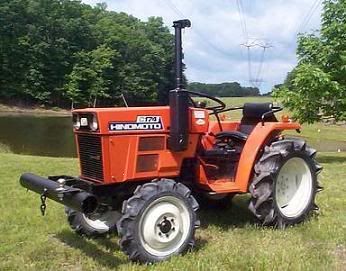DuaneW
Bronze Member
- Joined
- Feb 19, 2007
- Messages
- 85
One thing to remember, longer chain = less down force = less traction. If a hard pull you want to pull with as short a chain as possible. Always try to hook to the tree so that the pull is from the bottom of the tree (LOG), this also helps keep the front of the log out of the ground. LOGS are HEAVY, you must be carefull not to let the log roll or hook on things as either condition can QUICKLY roll your tractor.
Be Carefull and PAY ATTENTION to whats going on,
Good luck
DuaneW.
Be Carefull and PAY ATTENTION to whats going on,
Good luck
DuaneW.


